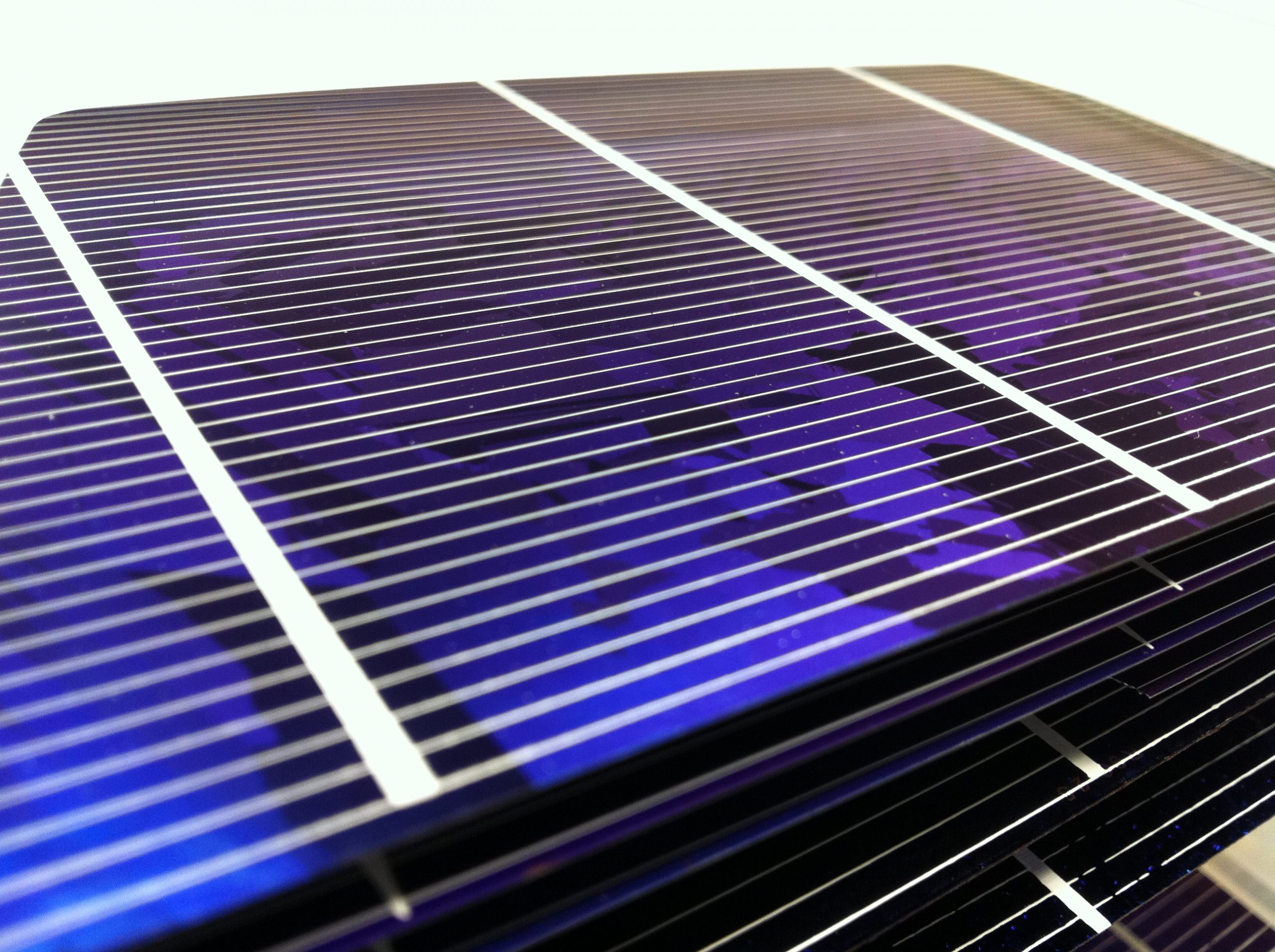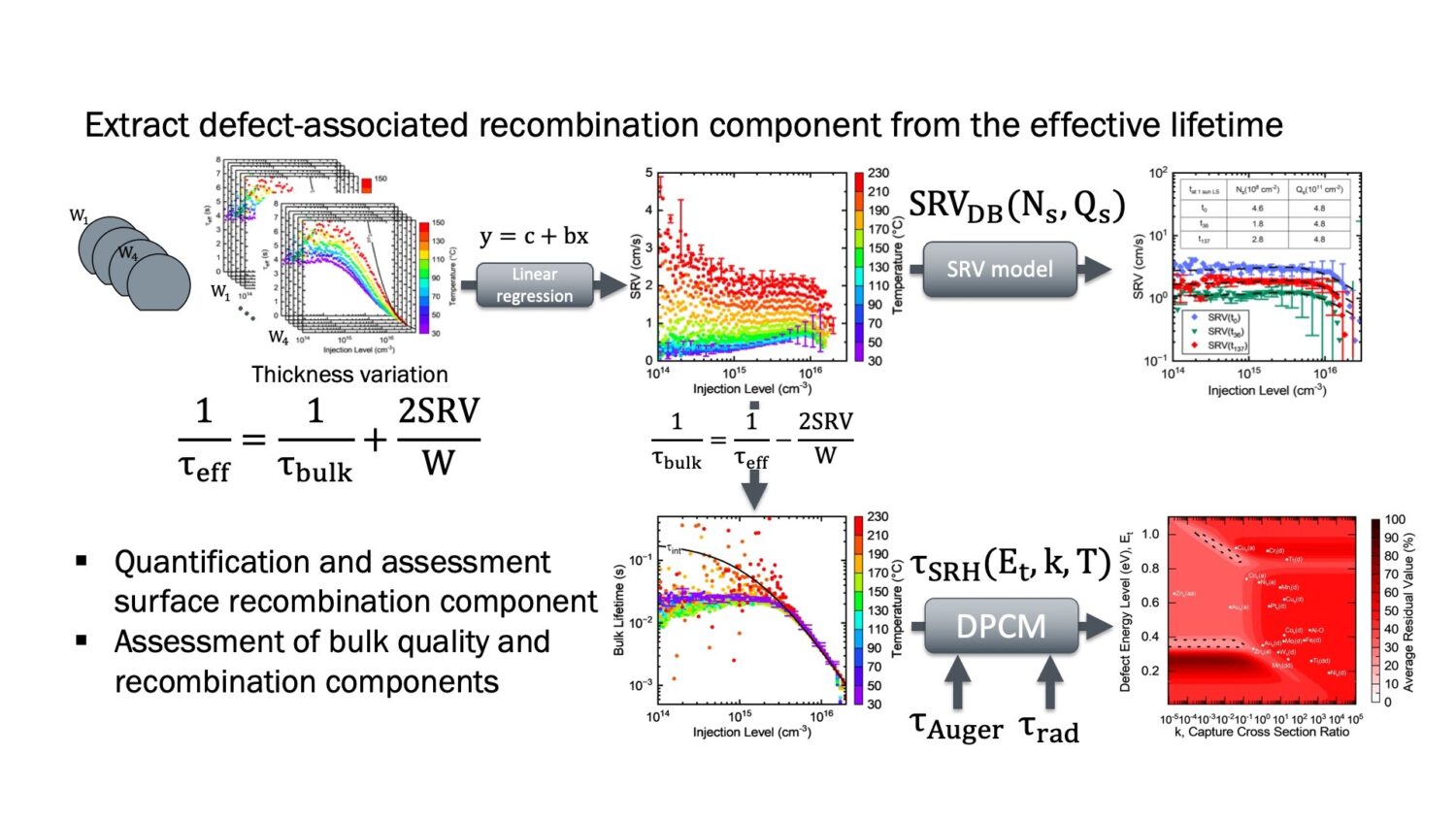Silicon Defect Assessment and Modeling in High Quality c-Si Material

In the last few years research on silicon photovoltaic has strongly shifted toward high-quality mono-crystalline silicon material driven by the need of improving the efficiency/costs ratio.
An effective way to study the detrimental defects in silicon wafers is by means of Temperature- and Injection-Dependent Lifetime Spectroscopy (TIDLS) coupled with the Shockley–Read–Hall recombination model. Given its high sensitivity this is an excellent technique to study high lifetime substrates.
However, a thorough evaluation of the Surface Recombination Velocity (SRV) dependence on injection level and temperature is vital to the extrapolation of meaningful results on the defects contained in the bulk of the material. Our research is currently focused on evaluating the effectiveness of several passivation layers such as a-Si:H(i), SiNx and Al2O3 in providing the most stable and reproducible passivation quality in order to extrapolate reliable information about bulk defects. The presence of defects in high lifetime material has been evaluated in a range of concentrations below 1010 cm-3, proving TIDLS to be the most sensitive technique available for defects characterization.
